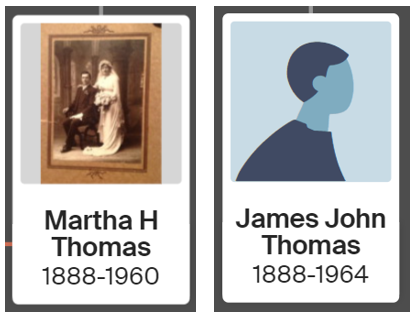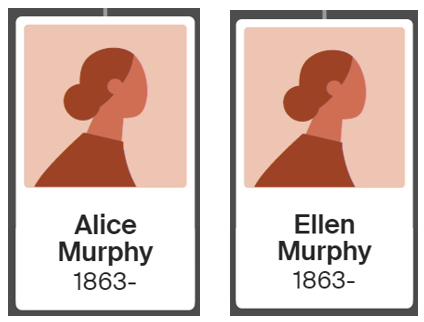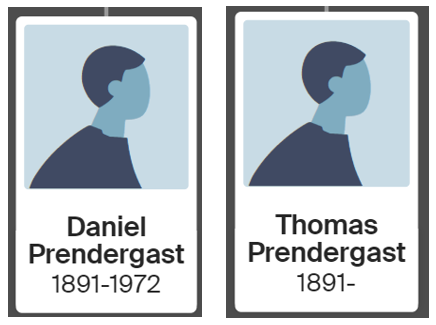Lately, I've been deeply invested in uncovering the exact birthplaces of my ancestors and extended family. This pursuit has been spurred by the realisation that familial accounts of birthplaces were often misleading or outright incorrect.
Though verifying these details has sometimes required purchasing official birth records - an expensive endeavour - I find immense satisfaction in knowing I am uncovering and preserving the truth about precisely where my ancestors' and relatives' stories actually began.
The Start of My 'Beginnings' Quest
I started this recent journey of discovery with the exact beginnings of my parents and their siblings.
In this post however, I will only share some of the interesting details uncovered in relation to the births and birthplaces of my mother and a couple of her siblings, because it led to a further discovery - an intriguing story about someone who is not a relative, but who's impressive story I'd love to share.
Accessing birth records through the Queensland Registry of Births, Marriages and Deaths has been a valuable resource, albeit with limitations. Currently, only birth records up to 1925 are available, so I've only been able to locate records for three of my maternal grandmother's eight children: my uncle Edmond James O'Donnell, my mother Margaret Brigid Connors nee O'Donnell, and my uncle Maurice Owen O'Donnell.
Upon initially receiving these records a few years ago, I really only gave them cursory glances. Recent deeper dives, however, have revealed fascinating insights.
Birthplaces and Surprising Details
The birth record of Edmond, my grandmother Sarah O'Donnell nee McCane's first child, lists his birthplace as "Kyburra, Bowen-Ayr Railway."
At first glance, this might sound as though he was born at a railway station! Not so. Edmond was born at home on his parents' farm near the Kyburra siding, along the Bowen-Ayr railway line.
This entry highlights how rural life during the 1920s shaped the recording of important events in my grandparents lives. They didn't live in a town. They lived in a farming community that was recognised and named according to the nearest important landmark - the railway siding where the farmers loaded their produce onto trains for shipment to markets elsewhere in the state.
So this home birth provided me with a very interesting insight into how a fact like "where born" was completed by my grandparents on their child's birth record. An interesting aside is what's recorded in the 'witnesses' column further along on the record.
There are three possibles for an entry in this column.
1. is for the name of a medical attendant (usually a doctor).
2. is for the name of a nurse attending the birth.
3. is for the name or names of any other witnesses (such as family members - husbands, aunts, grandmothers etc.)
Immediately I noted that my maternal great grandmother, Margaret McCane nee Farrell, was listed as the attending 'nurse'.
This indicates she acted as a midwife during the birth of her own grandchild. This role within families would have been quite common for women in her era. Many would have gained hands-on experience assisting relatives and neighbours in childbirth. My great grandmother Margaret had first-hand knowledge, having witnessed her mother giving birth to her siblings when she was 14 and 21 years old, and having given birth to seven children herself.
In addition, Margaret lived on a farm that was located quite close to daughter Sarah's home. This proximity to her daughter and son-in-law's farm further cemented her role as a supportive presence during childbirth.
Along with all of that, the tradition of midwifery appears to have run in the family. My great grandmother's sister, Helen Ann Davies nee Farrell, had made a career of it, operating as a midwife after her husband's death in 1911. No doubt, Margaret and her sister Helen would have had long conversations about childbirth over the years, and this combined wisdom would have comforted my grandmother Sarah during the delivery of her first-born.
When Sarah gave birth to her second child, my mother Margaret O'Donnell, in 1923, the birth record lists her birthplace as "Broadlands, Ayr-Bowen Railway", which essentially means that she was also born at home on the family farm, just like her older brother Edmond. Instead of using 'Kyburra' as the recognisable local landmark, my grandparents used the name often used for the area around the Kyburra siding.
The role my great grandmother Margaret played in the birth of this grandchild of hers was once again listed as 'nurse'. By this time, my great grandmother was aged 56, supporting her daughter (my grandmother) Sarah once again with the birth of a child.
Shifting Traditions
When my grandmother Sarah gave birth to her third child however, things had changed.
It was 1925 by then and the birth record for my uncle, Maurice Owen O'Donnell, lists his birthplace as "Palm Cottage, Poole Street, Bowen". This means that my grandmother Sarah had travelled almost 70 kilometres / 43 miles to the nearby town of Bowen to give birth.
The name "Palm Cottage" intrigued me and I wondered what sort of place this was! I also noticed that the witness listed for this birth was not my grandmother Sarah's mother (my great grandmother Margaret) as before, but someone named Nurse Amy Field.
I realised in that instance that my grandmother had travelled to what was called a "lying-in hospital" run by a midwife named Nurse Field.
Uncovering Nurse Amy Field's Legacy
My previous research into the history of the midwifery career of my maternal great-grandaunt, Helen Ann Davies nee Farrell (mentioned before as the sister of my great grandmother Margaret and therefore the aunt of my grandmother Sarah) had uncovered the fact that she had been running her "lying-in hospital" for around 23 years by this stage.
(Her story can be found here: The Story of Helen Ann Farrell )
It was not common practice for women to give birth in hospitals back in the early 1900s. The beginning of many babies' lives happened in a "lying-in hospital", which was a facility run by a private midwife in her own home. Pregnant women would go there just before the birth of their baby and remain there throughout labour and for several days afterwards, supported by the midwife.
It would seem highly likely that my grandmother Sarah had received advice from her aunt Helen about the benefits of giving birth at a highly regarded establishment like Nurse Field's 'Palm Cottage'.
My interest had been piqued! I was curious about Palm Cottage and I embarked on a research journey to learn about Nurse Amy field.
Immediately, I found that she had been mentioned in a blog post written by Trisha Fielding, a professional historian and writer who has worked at my local university, James Cook University. Trisha Fielding is a Special Collections Library Officer there, and is a published author of quite a number of books about aspects of North Queensland history.
The post from Trisha's blog North Queensland History is titled NQ Midwives - "Invisible Heroines" and there is a great photo of Nurse Field at the top.
The author of this post, Trisha Fielding, goes on to say:
"Born in Bowen in 1879, Amy Louisa Wilcox Field trained as a nurse in Warwick for three years under Matron McNamara and later nursed in private homes in Bowen and Proserpine. .... In 1908 she opened a private hospital in Bowen called Palm Cottage, where, by the time of her retirement in 1936, more than 2,000 children had been born. .... Nurse Field died in August 1939, at the age of 68, only three years after retiring from nursing."
There was an excerpt from a newspaper obituary included in this post as well, so I went off to Trove (Australia's free online research portal located at the National Library of Australia) to see what I could find in the newspaper archive.
In the Bowen Independent, dated Friday 28th of July 1939, this obituary appeared:
It was followed by this "Mother's Tribute":
An article published in the Townsville Daily Bulletin, dated Monday the 24th of July 1939, mentioned that from Bowen's early years in the late 1860s, up until 1922, there had been around 948 successful births in the town, but by 1936 (when Nurse Field had retired), the number had passed 2000!
That particular article also stated that "She had a marvellous record. Her patients always returned".
Historian Trisha Fielding had described Nurse Field as one of the "invisible heroines" of North Queensland's history, and this sentiment was echoed in contemporary newspaper articles, praising her exceptional record and the loyalty of her patients.
A Broader Perspective
The shift from home births on rural farms to seeking care at facilities like Palm Cottage highlights the evolving practices of childbirth in the early 20th century. Discovering these details has enriched my understanding of not only my family's history, but also the broader context of maternal care in rural northern Australia. It has also connected me to remarkable individuals like Amy Field, whose contributions deserve to be remembered and celebrated.
I now wonder if Palm Cottage might appear on the birth records of my other maternal aunts and uncles. Did my grandmother Sarah return to Nurse Field's care for the birth of her subsequent children? This question is a tantalising thread I intend to follow in my ongoing beginnings research.
I'm joining Amy Johnson Crow's 52 Ancestors in 52 Weeks challenge.
The prompt for this week's challenge is: In The Beginning.
Anyone who wishes to join the challenge, please click on this link: Generations Cafe (Facebook Group)












.jpg)















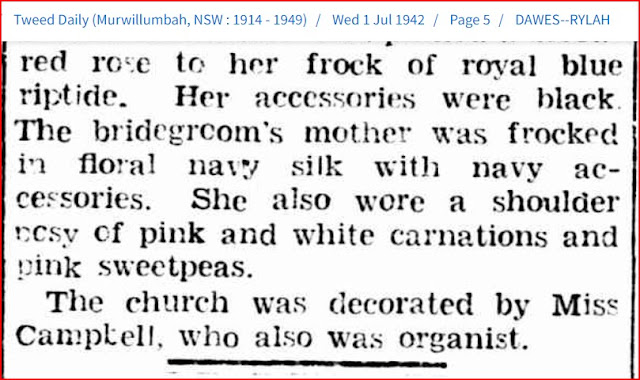









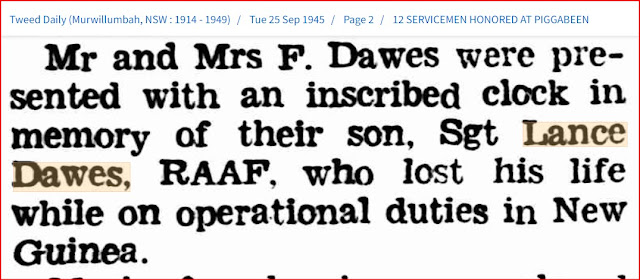








.jpg)





